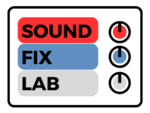Drums are the rhythmic foundation of a song, and achieving a powerful, impactful drum sound is essential for creating engaging tracks. Compression is a valuable tool that can help enhance the punch and presence of your drums, giving them the necessary energy and clarity to drive your music forward. In this step-by-step tutorial, we’ll explore specific compression techniques for drums, providing practical examples and instructions to help you a
The Importance of Compression for Drums
Compression plays a crucial role in shaping the dynamics of drums. It helps control the transients, tighten the sound, and add sustain without losing the natural characteristics of the drums. By utilizing compression effectively, you can achieve a more impactful and polished drum sound.
Inserting a Compressor on the Drum Bus
Begin by inserting a compressor on the drum bus, where all your individual drum tracks are routed. This allows you to apply consistent compression across the drums, creating a cohesive and powerful sound. Start with a moderate compression ratio, such as 4:1, and adjust the threshold to catch the peaks without overly squashing the drums.
Setting the Attack and Release Times
The attack and release settings on the compressor are important for shaping the drum sound. Adjust the attack time to let the initial transients of the drums pass through unaffected, preserving their impact. A slightly longer release time can help add sustain and body to the drums. Experiment with different settings to find the sweet spot that enhances the punch while maintaining the natural dynamics.
Fine-Tuning the Compression Ratio
The compression ratio determines the amount of compression applied once the signal exceeds the threshold. For drums, a ratio between 3:1 and 6:1 is often a good starting point. Lower ratios allow for more transparency, while higher ratios can add a more aggressive punch. Adjust the ratio based on the desired intensity and genre of your music.
Using Sidechain Compression
Sidechain compression is a popular technique used to create space and clarity in the mix while maintaining the drum’s impact. By sidechaining the drums to other elements, such as the bass or vocals, you can automatically reduce the drum volume whenever those elements are playing. This technique helps prevent frequency clashes, allowing the drums to cut through the mix more effectively.
Blending Compressed and Dry Signals
To maintain the natural dynamics of the drums while still benefiting from compression, consider using parallel compression. Duplicate your drum tracks and heavily compress the duplicate, then blend it with the dry, uncompressed signal. This technique allows you to retain the original dynamics while adding extra punch and presence to the drum sound.
By following these step-by-step compression techniques, you’re on your way to achieving impactful and powerful drum sounds. Remember, practice and experimentation are key. Each drum track and genre may require different settings, so trust your ears and adjust the compression parameters accordingly. With time and experience, you’ll develop your unique drum sound and create tracks that captivate listeners with their punch and presence. Keep refining your skills and exploring the endless possibilities of compression to elevate your drum mixes. Happy producing!





